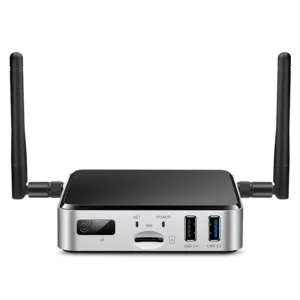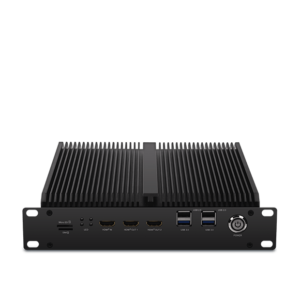AI on Side Products vs. Cloud AI: Professionals and Cons
AI on Side Products vs. Cloud AI: Professionals and Cons
Blog Article
Real-World Applications of AI on Edge Devices
Real-World Purposes of AI on Edge Devices
Artificial intelligence (AI) is no more confined to the realm of big, centralized knowledge centers. As a result of improvements in engineering, edge units now perform a vital position in deploying AI directly wherever information is generated. But what does AI on side products suggest, and why is it producing such a hype? Here, we'll explore how edge ai device operates in real life through edge devices and discover its wide variety of practical applications.

What is AI on Edge Products?
AI on edge units refers to deploying artificial intelligence calculations entirely on products like smartphones, cameras, drones, or IoT sensors. These units do not need access to centralized machines for control data; alternatively, they accomplish analysis and conclusions domestically, making the process quicker, more efficient, and usually more secure.
The "edge" here just describes computing done near to or at the source of data generation, rather than relying on the cloud. That shift is pushed by the needs for real-time information handling and the requirement to decrease latency, increase privacy, and minimize bandwidth usage.
Essential Real-World Purposes of Side AI
1. Wise Surveillance
AI-powered cameras equipped with face recognition, action detection, and anomaly recognition are transforming monitoring systems. Edge products in that domain may analyze video revenues in real-time to identify dubious activities, remove fake alarms, and enhance public safety. For instance, AI formulas can detect unusual movements and attentive authorities straight away without the need to deliver movie knowledge to a main server for analysis.
2. Healthcare Monitoring
Wearable products and portable medical gear are leveraging ai m.2 module for managing health data more efficiently. Edge-based AI in products like wellness trackers and smartwatches watches users' vitals, such as heartrate, oxygen levels, or body stress, in real-time. These systems analyze information locally and provide quick feedback, paving the way in which for faster treatment during emergencies.
Beyond wearables, advanced medical imaging devices designed with on-device AI may find signals of diseases like cancer, allowing earlier diagnoses even in distant parts without internet connectivity.
3. Autonomous Cars
Self-driving vehicles are among the most well-known examples of edge AI in action. With sensors, cameras, and LiDAR programs serving as knowledge resources, AI computations get position onboard these vehicles to make split-second decisions. From finding pedestrians and obstacles to moving city streets, edge AI ensures that the car operates easily and efficiently. The real-time running convenience of edge products eliminates the dependence on high-latency cloud methods, ensuring security in life-critical scenarios.
4. Retail Analytics
Side units in retail environments are supporting firms analyze customer behavior. Smart cabinets and AI-equipped cameras may find customer choices, monitor stock, and even customize in-store activities in actual time. The info made from these units helps stores produce informed decisions, increase customer care, and enhance catalog management.

5. Commercial IoT
Factories and commercial flowers are adopting edge AI to revolutionize their monitoring and automation processes. AI-powered detectors on machinery find possible flaws a long time before they result in costly failures. Predictive maintenance driven by side AI reduces downtime, enhances production, and ensures safety on the production floor.
6. Customized Experiences in Consumer Products
Your smartphone is an excellent exemplory case of how side AI personalizes individual experiences. Characteristics such as style personnel, versatile camera adjustments, and on-device language interpretation use real-time AI to react to individual needs without giving painful and sensitive knowledge to external servers. That fosters equally convenience and privacy for the finish user.
The Growing Affect of Side AI
The usage of AI on side units continues to surge, pushed by industries' increasing demand for low-latency, real-time computing, and higher information privacy. Their purposes are reshaping industries including healthcare and automotive to public security and retail. By adding AI's energy closer to where information is created, edge units aren't just increasing effectiveness but also demonstrating the countless potential of invention in the current linked world. Report this page